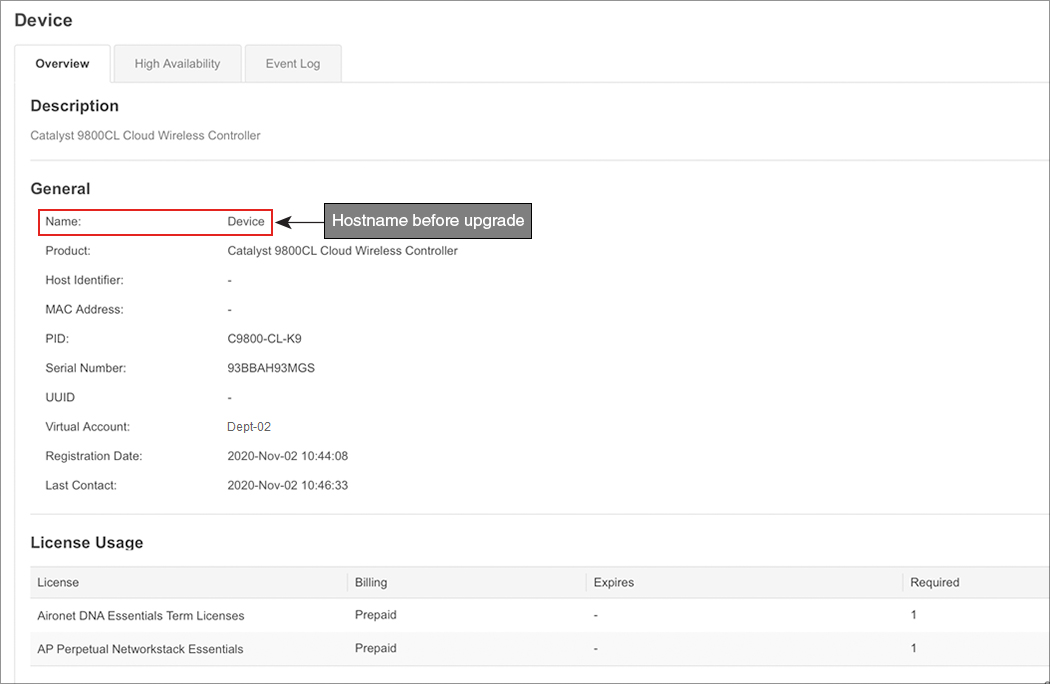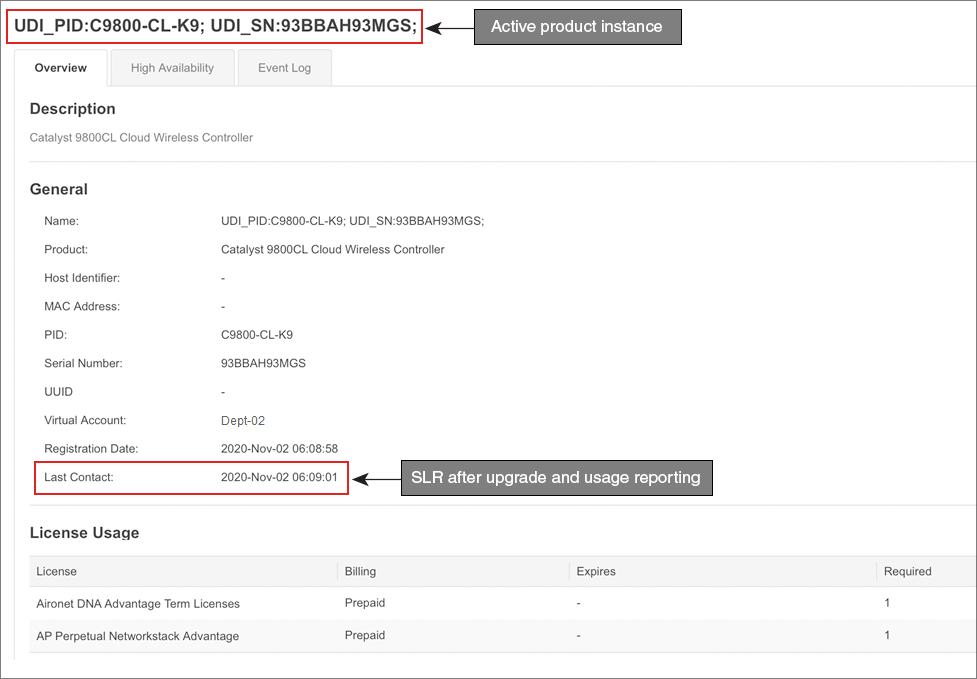Upgrades
This section explains the following aspects:
Migrating from earlier licensing models to Smart Licensing Using Policy. When migrating from earlier licensing models, also see the section for examples of migration scenarios that apply to Cisco Catalyst Wireless Controllers.
Upgrading in the Smart Licensing Using Policy environment - where the software version you are upgrading from and the software version you are upgrading to, both support Smart Licensing Using Policy.
Identifying the Current Licensing Model Before Upgrade
Before you upgrade to Smart Licensing Using Policy, if you want to know the current licensing model that is effective on the product instance, enter the show license all command in privileged EXEC mode.
How Upgrade Affects Enforcement Types for Existing Licenses
When you upgrade to a software version which supports Smart Licensing Using Policy, the way existing licenses are handled, depends primarily on the license enforcement type.
-
An unenforced license that was being used before upgrade, continues to be available after the upgrade. All licenses on Cisco Catalyst Wireless Controllers are unenforced licenses. This includes licenses from all earlier licensing models:
-
Smart Licensing
-
Specific License Reservation (SLR), which has an accompanying authorization code. The authorization code continues to be valid after upgrade to Smart Licensing Using Policy and authorizes existing license consumption.
-
Evaluation or expired licenses from any of the above mentioned licensing models.
-
-
An enforced or export-controlled license that was being used before upgrade, continues to be available after upgrade if the required authorization exists.
There are no export-controlled or enforced licenses on any of the supported Cisco Catalyst Wireless Controllers, therefore, these enforcement types and the requisite SLAC do not apply.
How Upgrade Affects Reporting for Existing Licenses
|
Existing License |
Reporting Requirements After Migration to Smart Licensing Using Policy |
|---|---|
|
Specific License Reservation (SLR) |
Required only if there is a change in license consumption. An existing SLR authorization code authorizes existing license consumption after upgrade to Smart Licensing Using Policy. |
|
Smart Licensing (Registered and Authorized license) |
Depends on the policy. |
|
Evaluation or expired licenses |
Based on the reporting requirements of the Cisco default policy. |
How Upgrade Affects Transport Type for Existing Licenses
The transport type, if configured in your existing set-up, is retained after upgrade to Smart Licensing Using Policy.
When compared to the earlier version of Smart Licensing, additional transport types are available with Smart Licensing Using Policy. There is also a change in the default transport mode. The following table clarifies how this may affect upgrades:
|
Transport type Before Upgrade |
License or License State Before Upgrade |
Transport Type After Upgrade |
|---|---|---|
|
Default (callhome) |
evaluation |
cslu (default in Smart Licensing Using Policy) |
|
SLR |
off |
|
|
registered |
callhome |
|
|
smart |
evaluation |
off |
|
SLR |
off |
|
|
registered |
smart |
How Upgrade Affects the Token Registration Process
In the earlier version of Smart Licensing, a token was used to register and connect to CSSM. ID token registration is not required in Smart Licensing Using Policy. The token generation feature is still available in CSSM, and is used to establish trust when a product instance is directly connected to CSSM. See Connected Directly to CSSM.
Upgrades Within the Smart Licensing Using Policy Environment
This section covers any release-specific considerations or actions that apply when you upgrade the product instance from one release where Smart Licensing Using Policy is supported to another release where Smart Licensing Using Policy is supported.
Starting with Cisco IOS XE Cupertino 17.7.1, RUM reports are stored in a format that reduces processing time. In order to ensure that there are no usage reporting inconsistencies resulting from the differences in the old and new formats, we recommend completing one round of usage reporting as a standard practice when upgrading from an earlier release that supports Smart Licensing Using Policy, to Cisco IOS XE Cupertino 17.7.1 or a later release.






 Feedback
Feedback